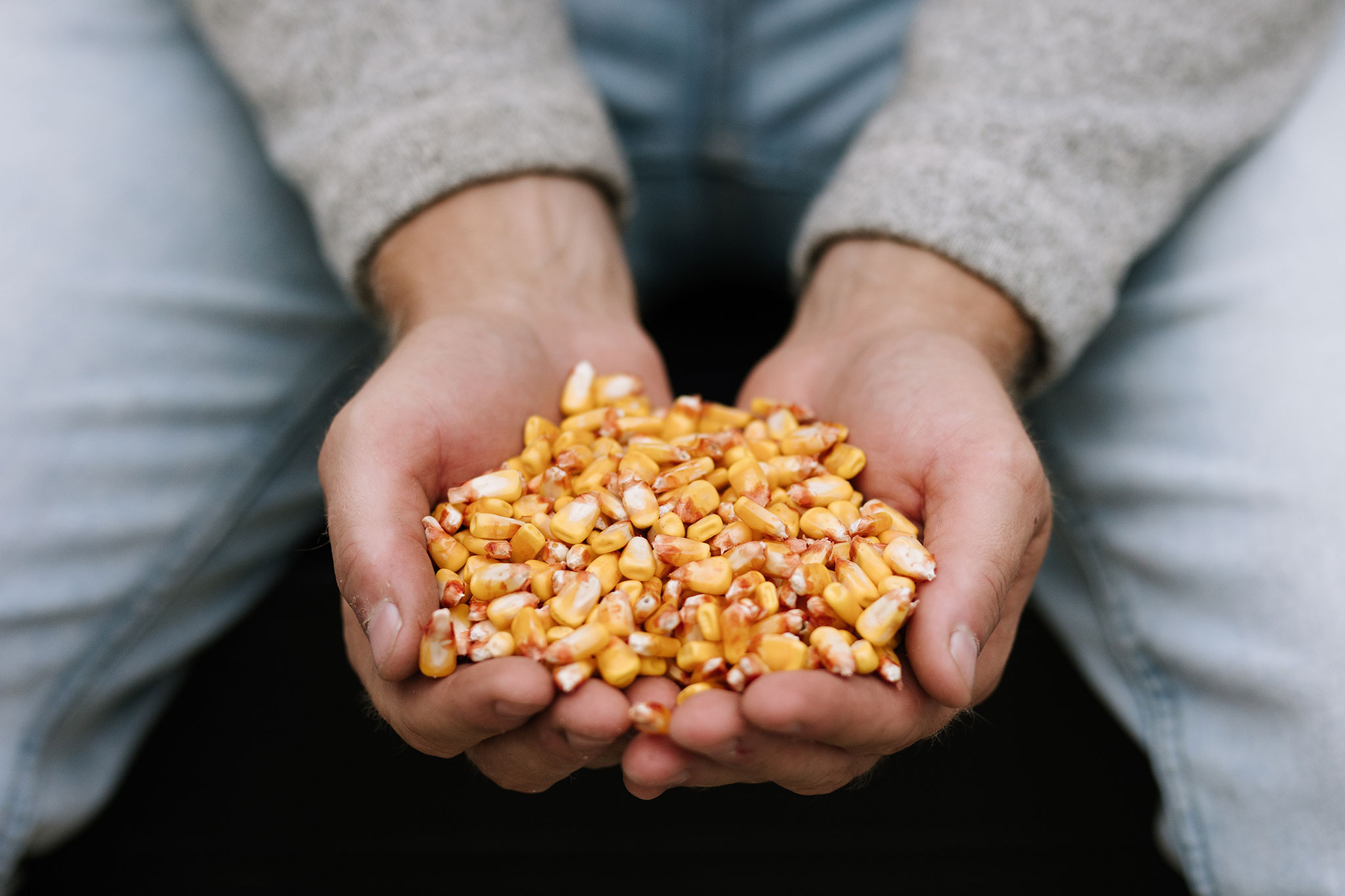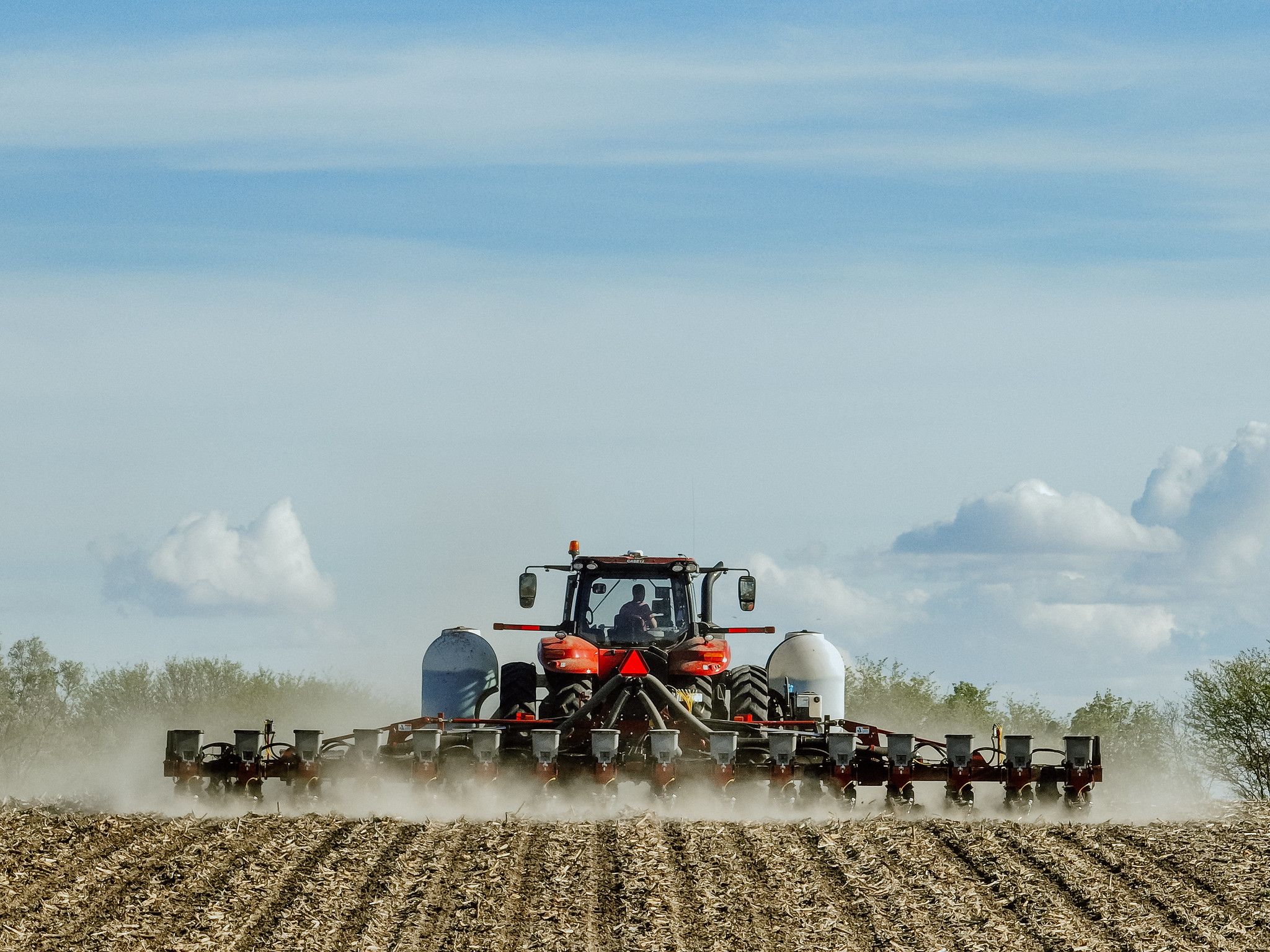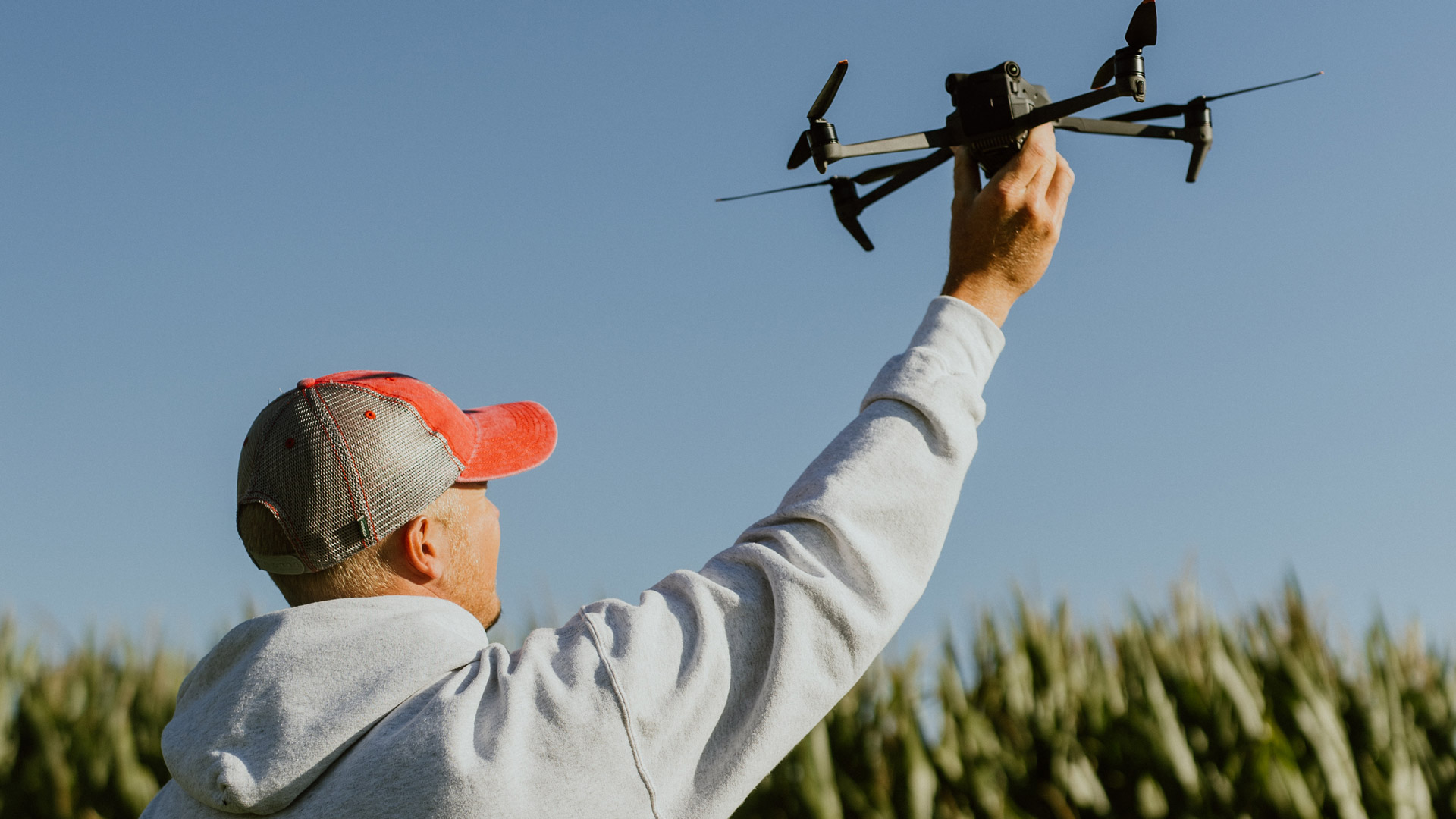For much of the year, corn leaves are a brilliant green color. Sunshine, water and nutrients grow the kernels to be used for food, fuel and everyday products. However, as the summer turns into fall, those green leaves begin to dry out and a tinge of yellow begins creeping up the plant. This change of color is the first hint that the annual corn harvest is coming. But how do corn farmers know exactly when to harvest their crop?
We asked farmer Brandon Hunnicutt, of Giltner, Nebraska, how he knows when to harvest his corn. He said technology, experience and monitoring the corn’s progress all play a part in knowing when corn is ready for harvest.
“It’s a little bit of science and a little bit of intuition,” he said.
Looking for Signs: How to Know When Corn Is Mature
Corn farmers track the progress of their crops all year. Corn has vegetative stages, where it is growing leaves and a tassel, followed by reproductive stages, where it is forming the kernels.
Hunnicutt said farmers know field corn—the most common type of corn in Nebraska— is getting close to harvest when it reaches the dented stage. That’s when the distinctive dent starts to appear in the top of the kernels as they harden.
Another key feature they look for is a milk line, or starch line, which is a white line that runs across the kernel. As the kernel hardens, the line moves from the top of the kernel down to where the base attaches to the cob. When the milk line gets to the base of the kernel, a black mark—called a black layer—forms at the very bottom of the kernel.
“You can break open an ear and look at the pattern,” he said. “You can see that line and see exactly where it is.”
“When corn farmers see the black layer,” Hunnicutt said, “it’s an indication the corn is mature.” After that, picking a time to begin corn harvesting is determined by monitoring moisture levels in the kernels. Customers, such as grain cooperatives or ethanol processors, each prefer their corn kernels at a certain moisture level. Hunnicutt aims to harvest their field corn when testers indicate 17% moisture or less.
Tracking the Moisture Level
Once corn is mature, farmers use technological tools and experience to know when the crop is dry enough to harvest. Moisture levels drop as the plant continues to dry out, so farmers watch for changes in the plant, such as ears tipping toward the ground, that indicate the plant is getting drier, he said.
When they think corn is about ready to harvest, Hunnicutt says many farmers will pick a few ears of corn by hand, break them open and examine the kernels. He said they also might actually taste the kernels to see if they are dry enough to moisture test or if they need more time.
“The guys who have done it a long time, they’ve got that feel for it,” he said. “It’s got that hard, crunchy, starchy feel to it.”
If a farmer thinks the crop is getting close to the right level, whether it be by taste or sight, they will test the moisture. Many farmers have their own handheld moisture testers. They also can take samples to their local grain elevator for more testing.
When Is Corn Ready to Be Harvested in Nebraska?
Usually, most field corn, popcorn and white corn is harvested in Nebraska in September and October. That’s due to many factors, including when the corn was planted and growing conditions throughout the season. Farmers decide when to plant corn based on soil temperature. Corn germinates at soil temperatures of at least 50 degrees, which usually happens in April or May. If planting is delayed by heavy rains or an unusually cold spring, the corn harvest also could be delayed.
How long it takes for corn to grow can be affected by weather—corn needs adequate water and likes warm, sunny days—and the variety of corn that is planted. Unlike other types of corn grown in Nebraska, sweet corn is picked in the summer when the cornstalks are green and the kernels are juicy and fresh. However, in general, most of the corn grown in Nebraska takes around 90-100 days to mature.
How Do Farmers Harvest Corn?
At corn harvesting time, farmers use a combine to cut the cornstalks and separate the kernels from the rest of the plant. Kernels remain in the combine and the rest of the plant, called the chaff, is blown out the back and into the field. Kernels are emptied from the combine into waiting trucks or wagons, which are used to haul the corn to market or storage.
Today, technology is incorporated in how corn is harvested. With the use of GPS, software programs and other smart farming technology, farmers can closely track and analyze yields—and use that knowledge to improve next year’s crop.
How Long Does the Corn Harvest Take?
How long it takes a farmer to harvest corn depends on several factors, such as the type and amount of equipment used, how many people participate and how much corn there is to harvest.
For Hunnicutt, harvest usually takes four to six weeks. In a perfect world where everything happens exactly the way it’s supposed to and nothing goes wrong, he estimated they probably could do it in three weeks. However, problems always arise, and corn farming involves many things beyond a farmer’s control—like the weather.
“There’s always the rain event, the breakdown or something else that comes up,” he said. “It could be the breakdown on the combine, the tractor, the trucks, where you’re hauling to or a slowdown at the elevator. So, you try to plan for a little longer.”
Don’t Jump the Gun: What Happens if Corn Is Harvested Too Early
Harvesting corn at the correct moisture level is critical. Corn with too much moisture must be dried using something called a corn dryer, which uses heat to draw out the excess moisture. Many farmers have corn dryers, but the fuel to run them is an added expense. Grain elevator operators may dock farmers for corn that’s too wet in order to make up for the added expense of drying it themselves.
“Other customers, like an ethanol plant, are very strict on moisture levels and might refuse to accept a load that’s too wet,” Hunnicutt said.
Don’t Delay: What Happens if Corn Is Harvested Too Late?
If corn needs to be so dry, why not wait to harvest it until you absolutely have to? That can be a problem as well. For one, the dried-out corn plant becomes surprisingly fragile. The corn plants can fall down, taking the ears down to the ground where the combine can’t reach. The corncobs can become so weakened and the kernels on them so loose that they can’t withstand harvest. If the ears disintegrate during harvest, kernels spill out on the ground instead of being gathered into the combine.
“Those ears will, for lack of a better term, explode,” Hunnicutt explained. “Those kernels will easily pop off.”
Waiting too long to harvest also can cause issues with weather, as combines can’t harvest in deep snow or mud. Plus, farmers don’t get a bonus for bringing in corn that’s dryer than it needs to be. They only get docked if it’s got too much moisture.
For all of these reasons, it’s important to harvest corn at exactly the right time. But, with so many factors to consider, it can be a very difficult decision to make!




